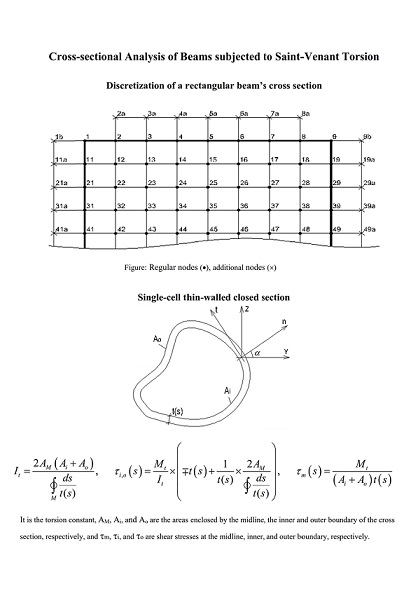This paper presents an approach to the elastic analysis of beams subjected to Saint-Venant torsion using Green’s theorem and the finite difference method (FDM). The Saint-Venant torsion of beams, also called free torsion or unrestrained torsion, is characterized by the absence of axial stresses due to torsion; only shear stresses are developed. The solution to this torsion problem consists of finding a stress function that satisfies the governing equation and the boundary conditions. The FDM is an approximate method for solving problems described with differential or partial differential equations; it does not involve solving differential equations, equations are formulated with values at selected nodes of the structure. In this paper, the beam’s cross-section was discretized using a two-dimensional grid and additional nodes were introduced at the boundaries. The introduction of additional nodes allowed us to apply the governing equations at boundary nodes and satisfy the boundary conditions. Beam’s cross-sections of various shapes and openings were analyzed using this model; shear stresses, torsion constant, and warping were determined. Furthermore, beams with thin-walled closed sections, single-cell or multiple-cell, were analyzed using the stress function whereby the linear distribution of the shear stresses over the thickness was considered; closed-form solutions for shear stresses and torsion constant were presented. For rectangular cross-sections, the results obtained in this study showed good agreement with the exact results, and the accuracy was increased through a grid refinement. For thin-walled closed sections it was noted that the maximal shear stress in the midline occurs at the position with the smallest thickness, which is in agreement with Bredt’s analysis, but the maximal shear stress in the cross-section did not necessarily occur at that position; moreover, the values of torsion constant were higher than those calculated using Bredt’s analysis

